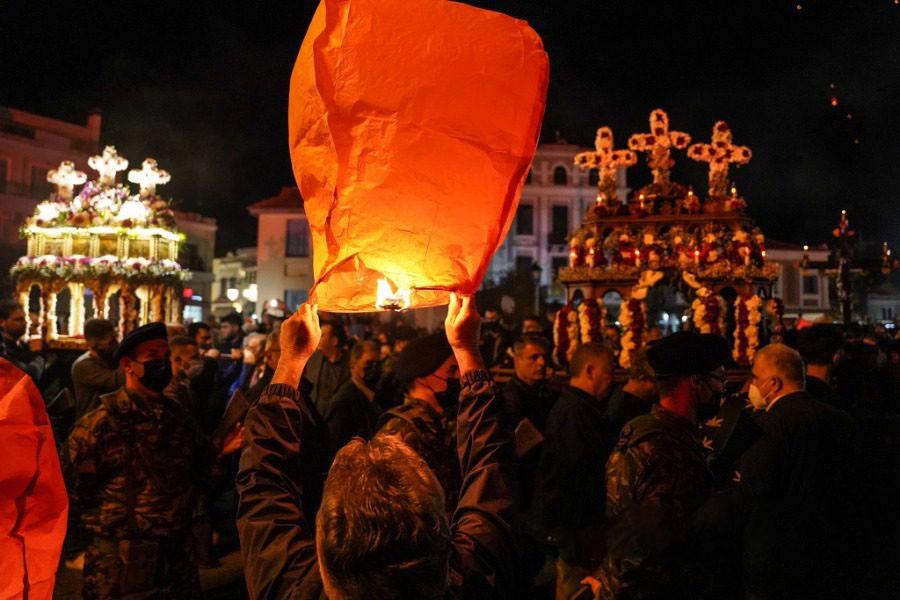Easter on Lesvos
 Περιγραφή
ΠεριγραφήEaster on Lesvos is the time of revival of age-old traditions and their symbolic content. Many of these customs have come down to us from the Asia Minor refugees, while others are local peculiarities.
One of the most ancient customs in the Mediterranean countries is the purification ritual through fire, kept very much alive in many Lesvian villages. This is the ritual burning of a Judas effigy over big bonfires called “koukoures”, symbolizing the need for cleansing of the community from all sins and evil over the course of the past year, so that the villagers may inaugurate the spring season without any encumbrances.
The mountain village of Agiasos has a special custom going back to pagan times: the Molding of the Twelve Crosses after the Lord’s Resurrection, twelve being a symbolic number referring to Good Thursday’s twelve Gospel passages and the twelve Disciples, all made of melted white Resurrection service candles. The is an apotropaic ritual as these crosses are fixed close to door and window openings to scare away the evil spirits, but also to keep obnoxious insects at bay.
One more Easter custom may be found in the Polichnitos, Kleiou and Kalloni vicinity villages called “kounies” (swings). These swings are set up on Good Monday by young men to be used mainly by young girls and passers-by. As they swing, the young men sing joyful songs and in return they are treated with fragrant cookies and flowers, with which they decorate the swing. Kids love this game and it is believed that this custom hails from mystical devotional practices for the goddess Aphrodite.
Mytilini in recent years has been reviving the impressive custom of lighting up sky lanterns that fill the night sky of the capital city during the holy procession of Christ’s Epitaphios (the Good Friday funerary procession). In the meantime the town’s fishermen light up marine flares rendering a unique spectacle for all.
Finally one of the most impressive customs is the representation of the Tearing Down of the Gates to the Underworld taking place at Aghios Therapon. At midnight, on Good Saturday, one church chanter closes the central entrance to the church and the priests and the parishioners stay outside in the yard. The door will only open after a short exchange between the priest outside the door (reenacting Christ) and the church chanter on the inside (playing the part of Hades). At some point the priest forcefully pushes the door open and all together, the priest and the faithful, rush into the church chanting “Christos Anesti!” (Christ is risen!).
 Γεωγραφικές πληροφορίες
Γεωγραφικές πληροφορίες

